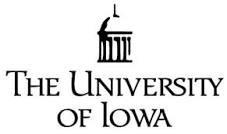RBC Lifespan Measurement in Diabetic Children
| Status: | Recruiting |
|---|---|
| Healthy: | No |
| Age Range: | 4 - 18 |
| Updated: | 12/1/2018 |
| Start Date: | November 15, 2017 |
| End Date: | September 2022 |
| Contact: | Guohua An, MD, PhD |
| Email: | guohua-an@uiowa.edu |
| Phone: | 319-467-4600 |
Red Blood Cell Lifespan Measurement in Diabetic Children
HbA1c, a measure of mean blood glucose over the lifespan of a red blood cell (RBC), is a
marker of increasing importance both for assessing glycemic control in children with known
diabetes and for the diagnosis of diabetes in children. HbA1c has demonstrated poor
reliability in diagnosis and management of pediatric diabetes and the most plausible reason
for this unreliability is that the reference ranges of HbA1c were established based on
120-day RBC lifespan observed in adults, without considering the RBC lifespan difference
between children and adults. The proposed studies will for the first time determine RBC
lifespan in diabetic children
marker of increasing importance both for assessing glycemic control in children with known
diabetes and for the diagnosis of diabetes in children. HbA1c has demonstrated poor
reliability in diagnosis and management of pediatric diabetes and the most plausible reason
for this unreliability is that the reference ranges of HbA1c were established based on
120-day RBC lifespan observed in adults, without considering the RBC lifespan difference
between children and adults. The proposed studies will for the first time determine RBC
lifespan in diabetic children
Screening visit: There will be one screening visit before the study. We will do some blood
tests that will determine if the subjects can be in this study. If the subject is qualify,
he/she will be asked to return for the following scheduled visits.
Study visit 1: We will draw a small amount of subject's blood from the IV. The study
subject's blood will then be marked with biotin. We will give back the subject's blood marked
with biotin through IV within 4 to 6 hours. Endotoxin analysis (conducted pre-infusion) and
bacterial culture analysis (conducted post-infusion) will be performed. Twenty minutes after
the blood transfusion, we will draw blood from the IV. After that, we will take out the IV
and the subject can go home.
All follow-up study visits:
The subject will have a study visit 24 hours after receiving blood marked with biotin. After
that, the subject will have a clinic visit every 7-10 days. These visits will end when we can
no longer find the biotin marked blood cells in the subject's blood. This is expected to be
approximately 12 weeks later.
At these visits, we will draw blood and also collect all blood glucose results in the past
7-10 days.
After the study visits are completed, there will be one follow-up visit 4-6 months after the
subject receives the biotin marked RBCs. We will draw about 0.25 ml of blood.
Continuous glucose monitoring and HbA1c determination-- We will monitor continuous glucose
concentrations throughout the study. This will be accomplished by setting up FreeStyle Libre
Pro continuous glucose monitoring (CGM) device for each study subject. In addition, HbA1c
will be measured once in the middle of the study (likely visit 6) and in the end of the study
(likely visit 12).
tests that will determine if the subjects can be in this study. If the subject is qualify,
he/she will be asked to return for the following scheduled visits.
Study visit 1: We will draw a small amount of subject's blood from the IV. The study
subject's blood will then be marked with biotin. We will give back the subject's blood marked
with biotin through IV within 4 to 6 hours. Endotoxin analysis (conducted pre-infusion) and
bacterial culture analysis (conducted post-infusion) will be performed. Twenty minutes after
the blood transfusion, we will draw blood from the IV. After that, we will take out the IV
and the subject can go home.
All follow-up study visits:
The subject will have a study visit 24 hours after receiving blood marked with biotin. After
that, the subject will have a clinic visit every 7-10 days. These visits will end when we can
no longer find the biotin marked blood cells in the subject's blood. This is expected to be
approximately 12 weeks later.
At these visits, we will draw blood and also collect all blood glucose results in the past
7-10 days.
After the study visits are completed, there will be one follow-up visit 4-6 months after the
subject receives the biotin marked RBCs. We will draw about 0.25 ml of blood.
Continuous glucose monitoring and HbA1c determination-- We will monitor continuous glucose
concentrations throughout the study. This will be accomplished by setting up FreeStyle Libre
Pro continuous glucose monitoring (CGM) device for each study subject. In addition, HbA1c
will be measured once in the middle of the study (likely visit 6) and in the end of the study
(likely visit 12).
Inclusion Criteria:
- children with either type1 or type 2 diabetes between 4-18 years old
Exclusion Criteria:
- consumption of biotin supplements or raw eggs within 30 days;
- history of gastrointestinal blood loss;
- heart failure ;
- active viral or bacterial infection;
- hemoglobinopathy;
- prior history of liver disease with transaminases more than 3 times the upper limit of
normal for age;
- uncontrolled thyroid disease;
- anemia (whole blood HCT<33);
- history of renal disease (prior serum creatinine more than >1.5 mg/dlL);
- detectable antibody to biotin.
We found this trial at
1
site
University of Iowa With just over 30,000 students, the University of Iowa is one of...
Click here to add this to my saved trials
